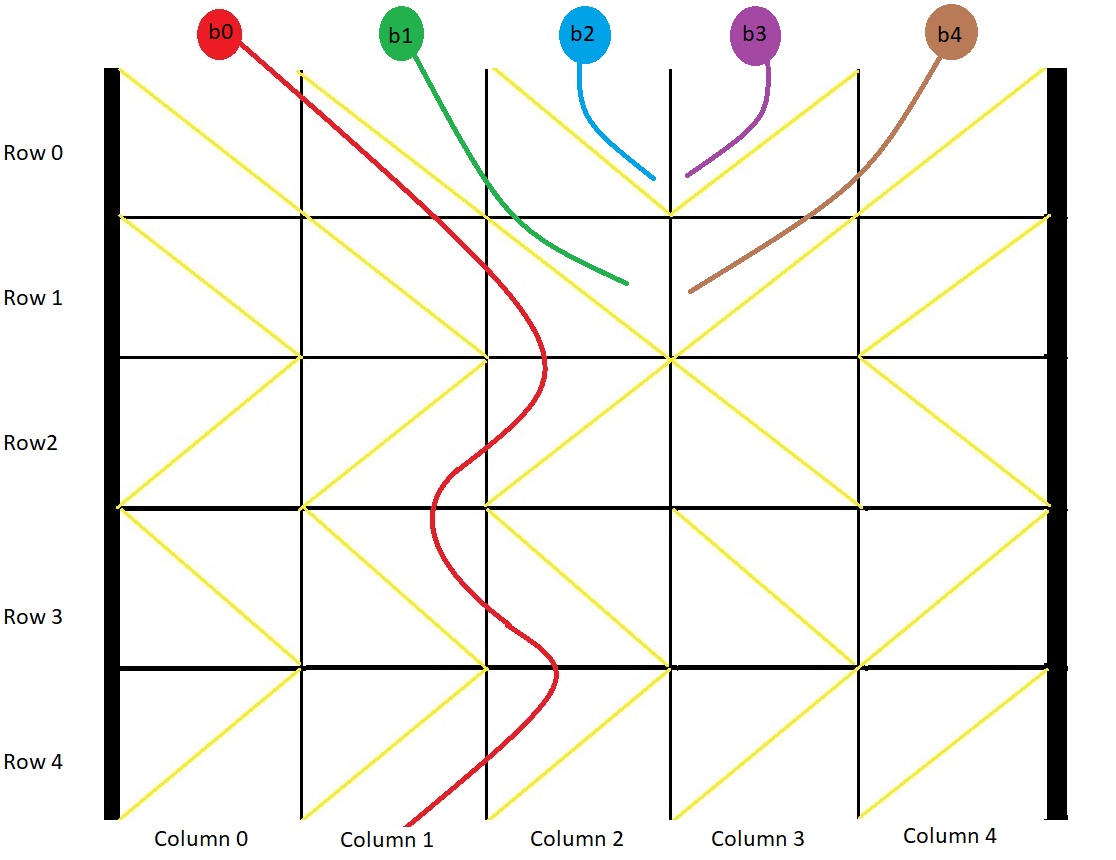You have a 2-D grid of size m x n representing a box, and you have n balls. The box is open on the top and bottom sides.
Each cell in the box has a diagonal board spanning two corners of the cell that can redirect a ball to the right or to the left.
- A board that redirects the ball to the right spans the top-left corner to the bottom-right corner and is represented in the grid as
1. - A board that redirects the ball to the left spans the top-right corner to the bottom-left corner and is represented in the grid as
-1.
We drop one ball at the top of each column of the box. Each ball can get stuck in the box or fall out of the bottom. A ball gets stuck if it hits a “V” shaped pattern between two boards or if a board redirects the ball into either wall of the box.
Return an array answer of size n where answer[i] is the column that the ball falls out of at the bottom after dropping the ball from the ith column at the top, or -1 if the ball gets stuck in the box.
Example 1:

Input: grid = [[1,1,1,-1,-1],[1,1,1,-1,-1],[-1,-1,-1,1,1],[1,1,1,1,-1],[-1,-1,-1,-1,-1]] Output: [1,-1,-1,-1,-1] Explanation: This example is shown in the photo. Ball b0 is dropped at column 0 and falls out of the box at column 1. Ball b1 is dropped at column 1 and will get stuck in the box between column 2 and 3 and row 1. Ball b2 is dropped at column 2 and will get stuck on the box between column 2 and 3 and row 0. Ball b3 is dropped at column 3 and will get stuck on the box between column 2 and 3 and row 0. Ball b4 is dropped at column 4 and will get stuck on the box between column 2 and 3 and row 1.
Example 2:
Input: grid = [[-1]] Output: [-1] Explanation: The ball gets stuck against the left wall.
Constraints:
m == grid.lengthn == grid[i].length1 <= m, n <= 100grid[i][j]is1or-1.
Solution: Simulation
Figure out 4 conditions that the ball will get stuck.
Time complexity: O(m*n)
Space complexity: O(1)
C++
|
1 2 3 4 5 6 7 8 9 10 11 12 13 14 15 16 17 18 19 20 21 |
// Author: Huahua class Solution { public: vector<int> findBall(vector<vector<int>>& G) { const int m = G.size(); const int n = G[0].size(); auto fall = [&](int x) -> int { for (int y = 0; y < m; ++y) if ((G[y][x] == -1 && (x == 0 || G[y][x - 1] == 1)) || (G[y][x] == 1 && (x == n - 1 || G[y][x + 1] == -1))) return -1; else x += G[y][x]; return x; }; vector<int> ans(n); for (int x = 0; x < n; ++x) ans[x] = fall(x); return ans; } }; |